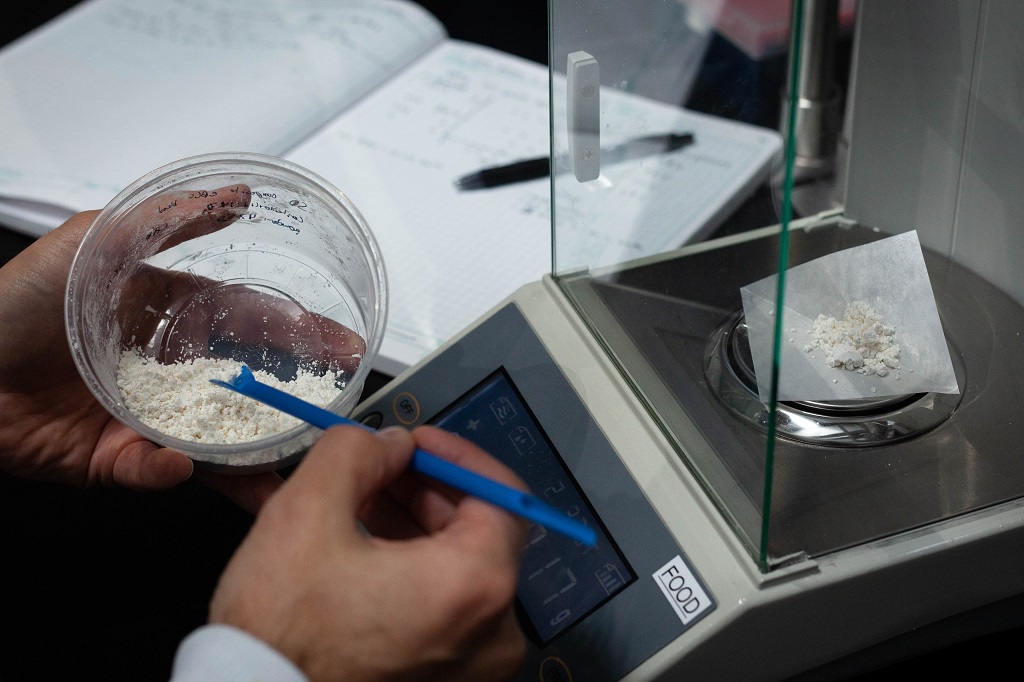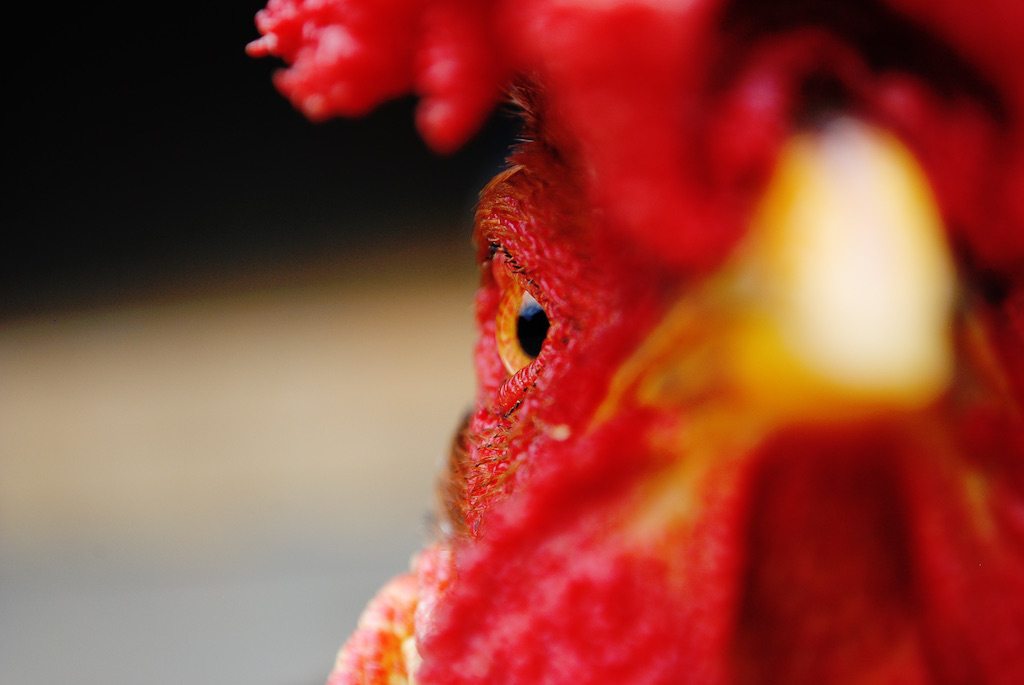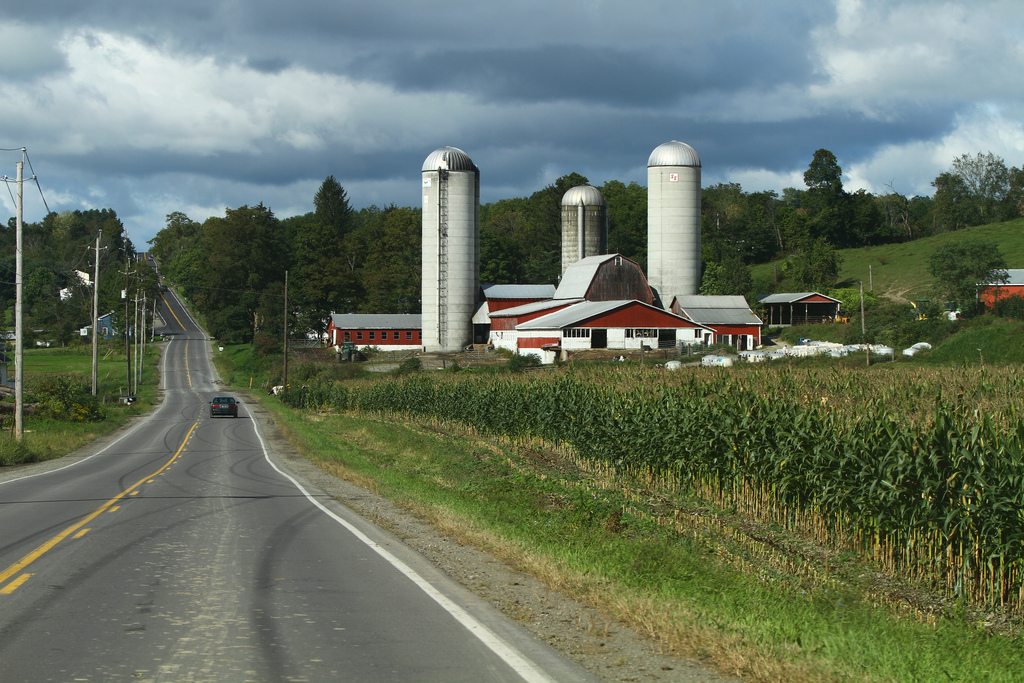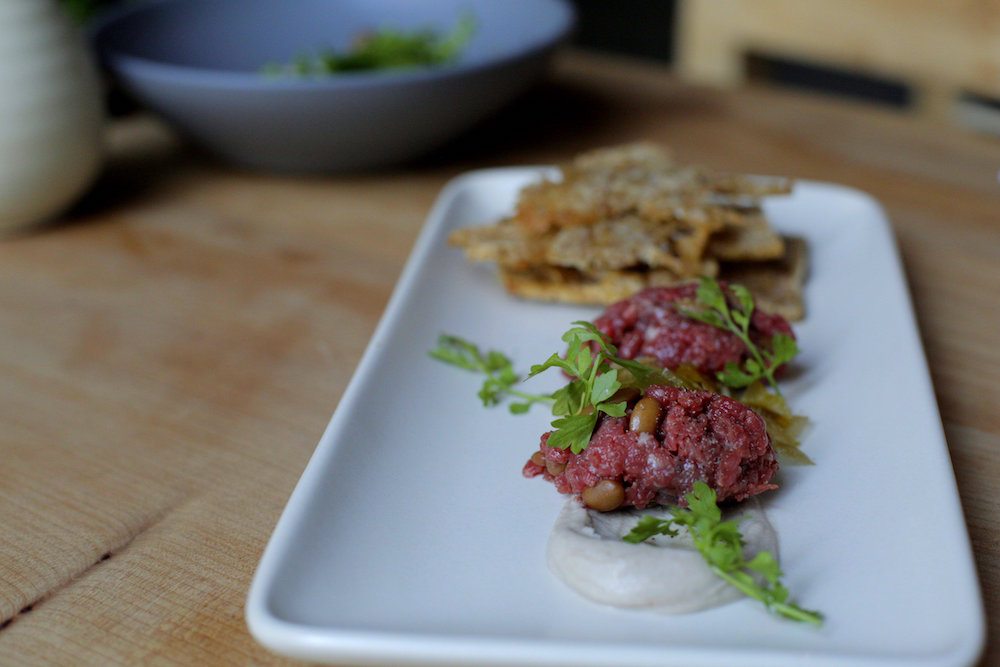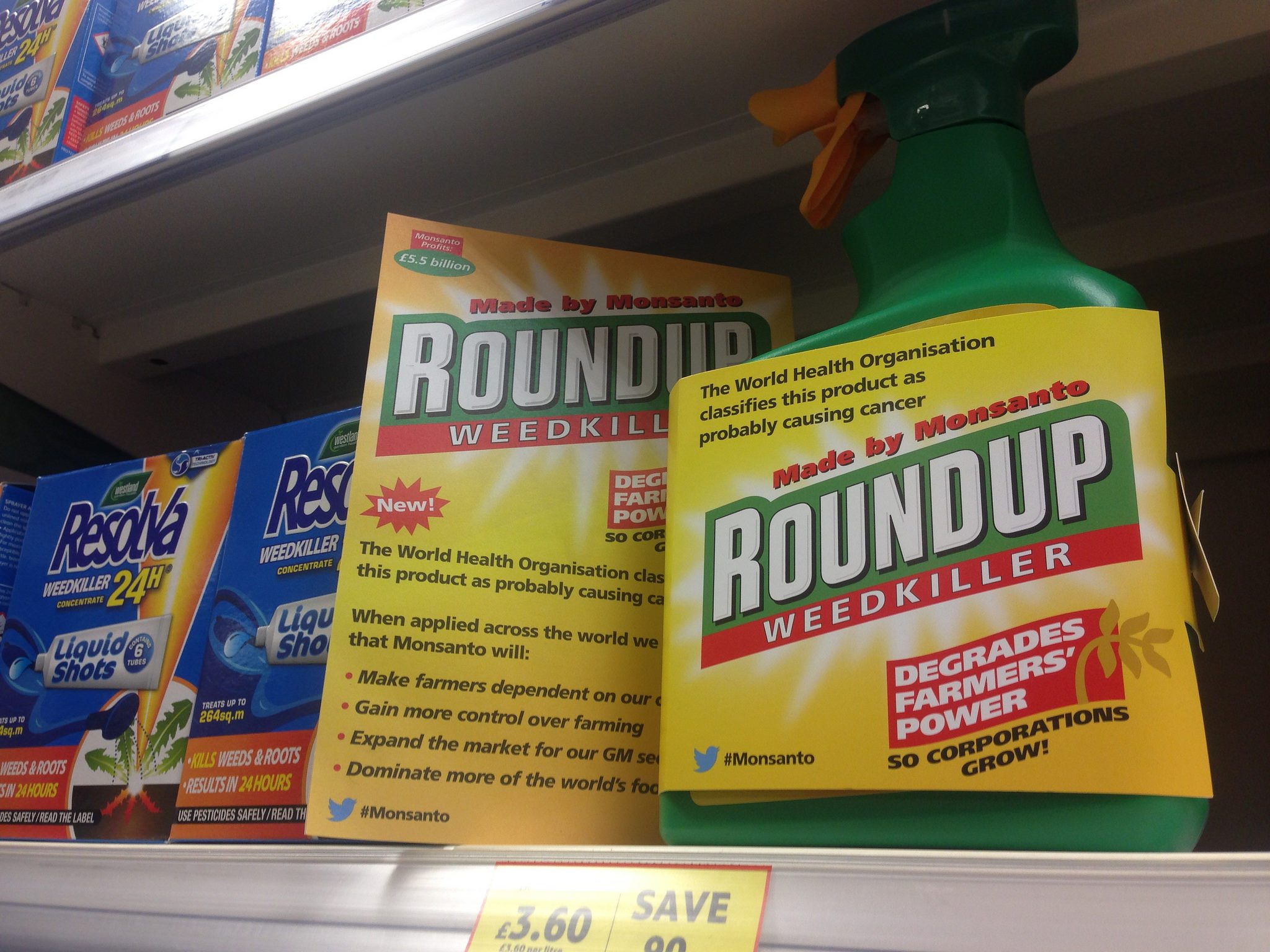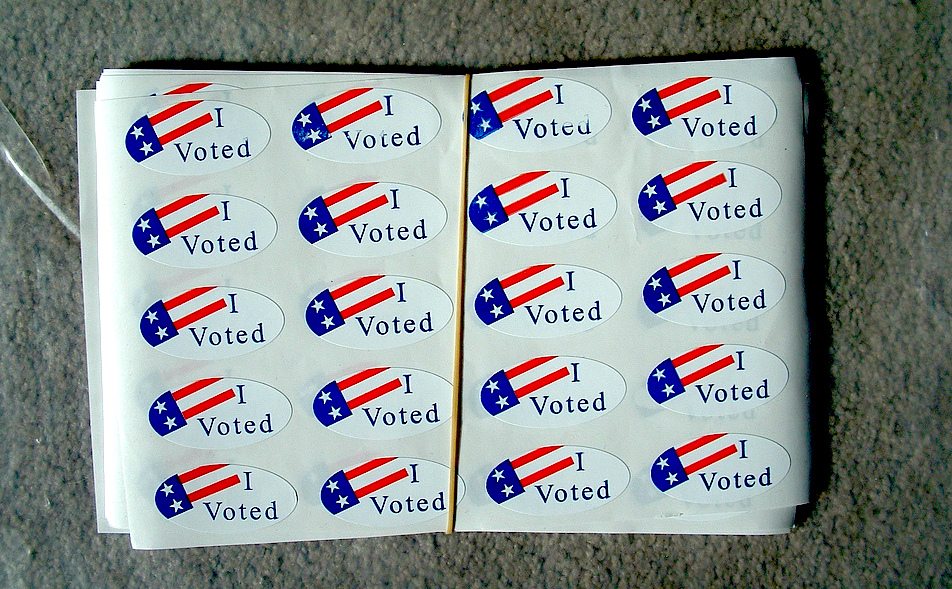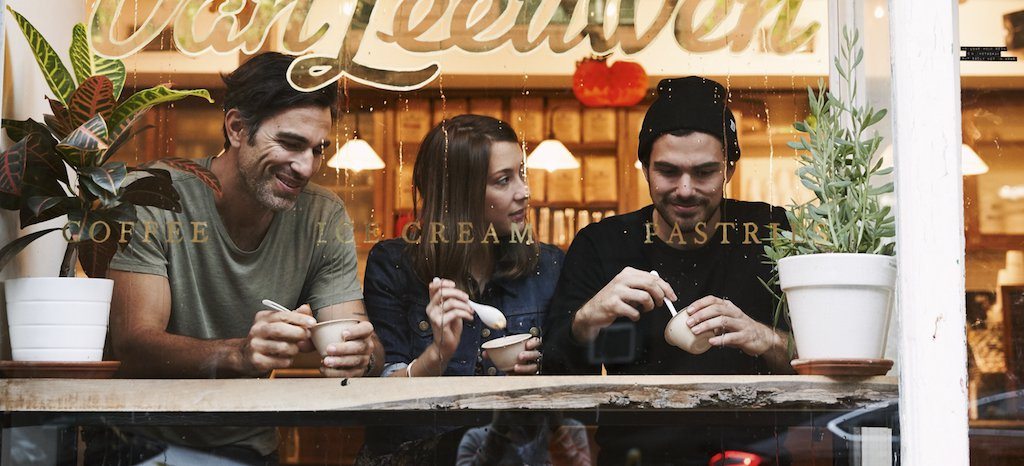
Van Leeuwen
Van Leeuwen Artisanal Ice Cream is an indulgent product, even by the decadent standards of their super-premium peers. Each $5.50 scoop is flavored with ingredients like $12-a-pound Michel Cluizel chocolate and Sicilian pistachios from the base slopes of Mount Etna, one of the world’s most active volcanos. Professional food journalists and Internet reviewers agree: This is a spare-no-expense operation, and you can taste it. Or as one Yelper put it:
Van Leeuwen is a joke about hipsters and you are the punchline, stuffing your face with eight dollar’s worth of roasted-fig-carmelized-honey-and-walnut ice cream. So, so, so good.
It’s fancy stuff, all right. But focusing on the over-the-top sourcing kind of misses the point—which is that Van Leeuwen, despite its lavish image, is a lean, scrappy operation. Founders Laura O’Neill and the brothers Ben and Pete Van Leeuwen know they won’t be seeing much money in the short run.
“We haven’t amassed any personal wealth other than equity in the business,” says co-founder Ben Van Leeuwen. “Any whatsoever.”
That’s not only because they splurge on rarefied, impractically-expensive ingredients—it’s because they locate their stores in pricey, hot-market neighborhoods and produce their product in-house to keep quality high, even though it costs more. If Van Leeuwen’s products are known for self-indulgence, their business strategy can be characterized by self-restraint: they don’t compromise on costs that count, put every spare dollar back into the business, and don’t expect to get rich pursuing the textures and flavors they love.
The inspiration for Van Leeuwen came in the form of a Good Humor truck Ben and Pete Van Leeuwen piloted around their Greenwich, Connecticut hometown during college summers. They saw how lucrative even a conventional ice cream truck could be, and figured a higher-margin version could be seriously profitable. In 2008—armed with a $75,000 friends-and-family investment and a $25,000 line of credit—they and O’Neill produced their $8,000 first production run. They bought two old postal trucks, revamped them, and went to work.
As things turned out, 2008 was a good year to start a food truck. The economic downturn had many Americans looking for gourmet food on the cheap—and inspired a revolution in upscale meals on wheels. According to IBISworld data, the number of food trucks increased 16 percent that year, compared with only 4 percent the year before. Among them were Van Leeuwen retrofitted vehicles, which started roving through New York City on June 21.
The disadvantage of the truck model is high initial costs; the advantage is low overhead. With a unique, high-priced, high-margin product, Van Leeuwen grossed $425,000 that first summer, with profits of $125,000, according to a 2010 Inc. magazine profile. The three founder/employees hung on to their day jobs, but added a third truck to their fleet before winter blew in.
They also took steps to mitigate the extremely seasonal nature of the ice cream business—and add new revenue streams—by offering coffee, as well as house-made and local pastries.
“Coffee is a big part of our business,” Van Leeuwen says. “It’s complementary to ice cream—it doesn’t dilute the brand at all. Our shops are very much café /ice cream shops. And that’s unique.”
The next year, the three Van Leeuwen trucks brought in $900,000 in revenue and $325,000 in profit (again according to Inc.). That was enough to finance the 2010 opening of their first brick-and-mortar store. They chose to open in the part of the city where they all lived—Greenpoint, Brooklyn, then a rapidly gentrifying neighborhood, and today some of the most coveted real estate in New York.
In subsequent years, the company continued to grow by plowing profits back into the business. By the end of 2012, Van Leeuwen had three more trucks, as well as brick-and-mortar locations in Brooklyn’s Boerum Hill neighborhood and Manhattan’s East Village. And, in 2014, Pete Van Leeuwen moved to Los Angeles—where ice cream’s in season all year round—to spearhead new operations there. Today, the company runs three trucks in Los Angeles, as well as a store downtown, and two new locations soon to open in Culver City and Franklin Village.
The conventional wisdom is pretty clear: If you want to succeed in the ice cream business, go wholesale. You probably shouldn’t imitate Van Leeuwen and base your strategy on selling by the cone and cup. Yes, selling pints and half gallons through grocery stores has some added costs—increased packaging, distribution costs, and retail-related costs like trade promotions. But it’s a much simpler model with a much clearer path to scaling up.
“To sell ice cream in one of our stores involves rent, paying people to scoop, utilities,” says Ben Van Leeuwen. Compare that with the amount of product, less than 25% of overall business, that Van Leeuwen sells through about 100 grocery stores: The distributors just pick up the raw pints at their Greenpoint production facility, and they handle the logistics and much of the bookkeeping.
“Compared to doing retail it’s so easy,” Van Leeuwen says. “We could increase our wholesale this year by five-fold without any more infrastructure at all. But increasing our store sales five-fold would require millions and millions of dollars in investment in new stores: building them, finding the architects, the crews, permits.

Van Leeuwen stores are high-status and high-visibility. Pictured here, the company’s West Village store
“I think generally that history’s proven that wholesale is the better business,” he says. “Haagen-Dazs, Ben & Jerry’s, Ciao Bella, Talenti—none of them have much retail presence.” There are dozens of local, artisanal ice cream brands on the shelves of a New York City Whole Foods, but in the entire city Van Leeuwen is aware of fewer than ten brick-and-mortar competitors.
More conventional wisdom: Don’t make your own ice cream. Use a co-packer. That’s actually what Van Leeuwen did at first. Until 2011, its products were produced by Mercer’s Dairy in Boonville, New York, about 250 miles north of Brooklyn. But from the start, it never offered the ease and convenience that co-packing is supposed to offer, and Van Leeuwen’s high-maintenance product wasn’t a good fit.
“I wouldn’t necessarily call what we did co-packing,” explains O’Neill. “It was 100 percent our recipes, using local dairy and then the special ingredients like the chocolate and the pistachios…. And when we would do special flavors for the holidays, I remember being up there, hand-shaving a bushel of nutmeg for eggnog ice cream.” It became clear that they were going to have to bring manufacturing in-house.
That was a big deal. But to understand why, we need to talk a little shop. Very little “homemade” commercial ice cream is made from scratch. Instead, shops buy a “base” or “white mix”—a pasteurized blend of cream, milk powder, sugar, and stabilizers—from a dairy. They flavor the mix, pour it into the batch freezer, and they’re done. To an elite ice cream maker, that’s “homemade ice cream for dummies,” says Ben Van Leeuwen. There might be some D.I.Y. purism in that attitude, but it’s true that commercial bases are hard to customize for each individual flavor’s taste and texture.
Strawberries, for instance, already contain a good amount of sugar and water. Mix them in with a standard base, and the product might be too sweet or have an off texture (which is why most bases contain lots of commercial stabilizers). Besides, if you’re creating a mix with $12-a-pound chocolate, do you really want 95 percent of your formulation to be off-the-rack?
Ice cream makers who want full control over the final product (and Van Leeuwen is all about controlling the product) have to make their own bases. But businesses that don’t work with a pre-pasteurized base must, by law, pasteurize their blend in-house. That’s a big deal. It means investing in serious equipment, filing with USDA to become a certified dairy plant, plus annual paperwork and inspections. As expenses go, in-house pasteurization is the big kahuna.
“That’s an expense in equipment and maintenance, because you’ve got a lot of cleaning to do, you’ve got to get a boiler, you’ve got to clean the equipment,” Says Darryl David, an ice cream and private label consultant. “It makes for a very complex, very unique product, but that’s a lot of work—more than most people want to do. It’s harder than making ice cream.”
And the costs aren’t necessarily scalable, which means perennially upping the cost of doing business as the company expands.
“People who are going to make that kind of commitment need to continue to invest in themselves,” David says. “So, as they grow, they’re going to have to keep increasing their infrastructure. That’s going to be a challenge for [Van Leeuwen].”
If Van Leeuwen succeeds, they’ll be able to make extremely refined product. Consider: Hardly any ice cream manufacturers use more than two or three different bases. Van Leeuwen has dozens. Only two of the company’s 30-plus flavors—ginger and mint chip—use the same base.
Happy New Years! 2015 was great and we can’t wait to make even more rad vegan and classic Flavors in 2016! A photo posted by Van Leeuwen Artisan Ice Cream (@vanleeuwenicecream) on
David calls this the “every-flavor-is-a-snowflake model,” and says it can be a good approach “as long as they’re willing continue to expand the infrastructure to accommodate their needs.”
The next round of infrastructure expansion is already under way. Sometime this year, Van Leeuwen will trade its 800-square-foot Greenpoint facility for a 5,000-square-foot meant to carry them through the next phase of growth. To finance it, the company borrowed money for the first time since the initial friends-and-family round: a $700,000 Small Business Administration loan. Ultimately, the facility will cost less than $900,000. But Ben Van Leeuwen says that it’s a bargain.
Passion fruit ice cream packed with pieces of house made tres leches birthday cake. ? #icecream #passionfruit #vanleeuwen A photo posted by Van Leeuwen Artisan Ice Cream (@vanleeuwenicecream) on
“I think if someone else tried to do it it would cost more than double that,” Ben Van Leeuwen says. “But we worked hard and found a great consultant who sourced used equipment for us that’s completely rebuilt. That’s [even] better than new equipment, because the older stuff was made a lot better and it carries all the same warranties. I think our equipment from the pasteurization was $180,000, and if we had done new it would’ve probably been like $450,000.”
One downside? The refurbished equipment has slowed things down a lot.
“It’s just taking so much longer than expected,” Van Leeuwen says. “The pasteurizer alone added about two months, because we had to source the equipment, then check it out, then send it to someone who would rebuild it.”
It’s another example of the company taking a more complicated, slower route, one they hope will be worth it in the long run.
The high cost of local pride
The Van Leeuwen model—make the best product and damn the cost, start stores in the classiest neighborhoods and damn the cost, take less money out of the company, and put everything into steady long-term growth—is not the most straightforward way. It offers some big risks, and it takes a commitment that goes beyond the financial. Though it’s easy to imagine someone cooking this strategy up as a way to succeed in business, it’s hard to believe that anyone would have the follow-through to stick with it through long, hard-working, penny-pinching years without something else driving them.
For Van Leeuwen, we can think of three things that seem to be going on.
We’ve bounced these ideas, more or less, off the owners. And honestly, we think we might have to add a fourth: They started selling ice cream, and one step after another found themselves on the path they’re on, guided by personal character, luck, the market, and some solid professional advice. And now, they own a for-real business. And it’s theirs.








